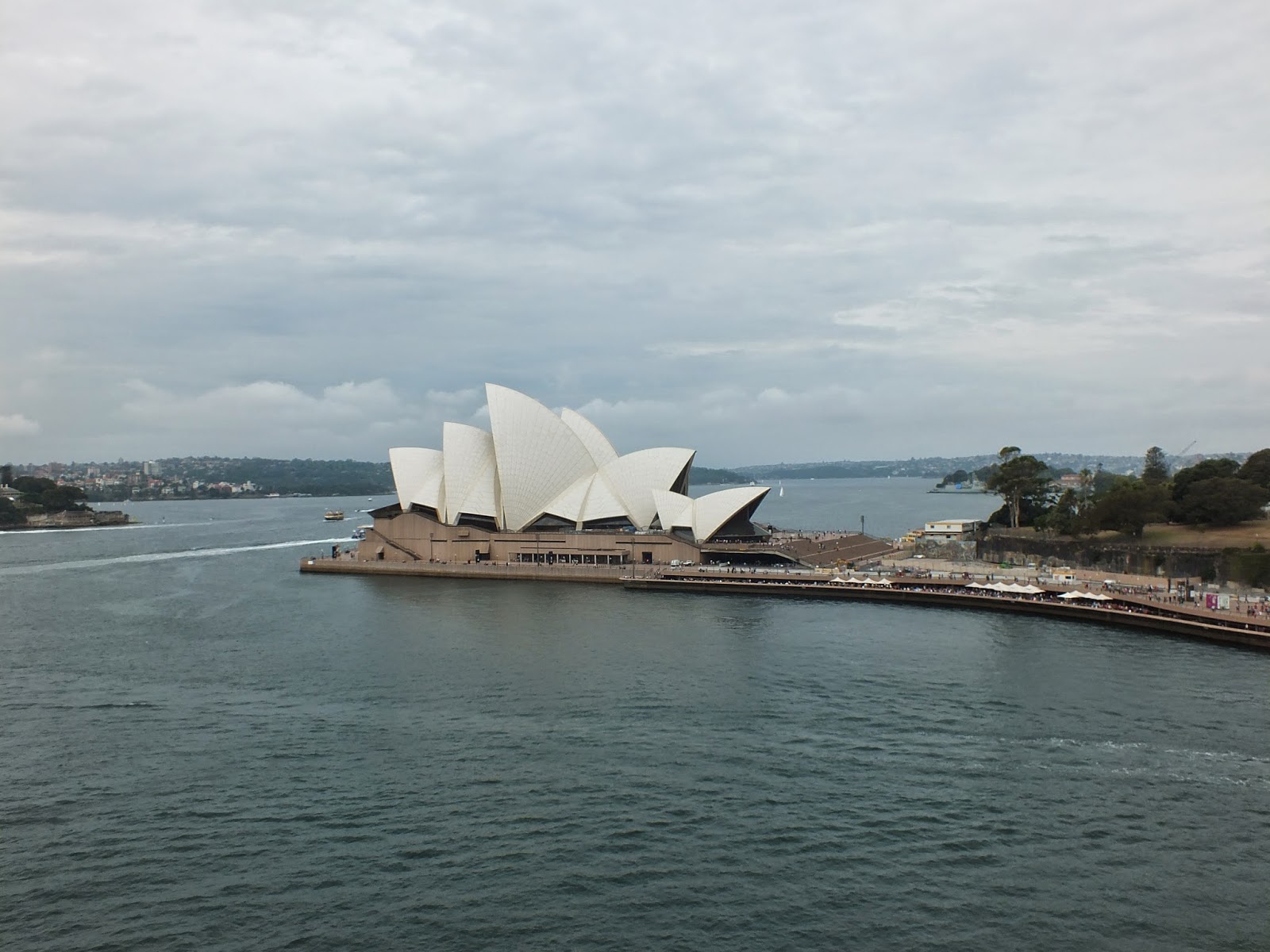Around 8 a.m. the shuttle took me to the airport and the
airplane took off at 10 a.m., due to time change we arrived than at 11.45 a.m.
already, after almost 3 hours of flight at Ayers Rock.
William Christie Gosse was the first European man to
arrive at Uluru on 19 July 1873 and named it Ayers Rock after Sir Henry Ayers,
then Chief Secretary of South Australia.
Uluru was first proclaimed a National Park in March 1958
under the control of the Northern Territory Reserves Board. In October 1985
Uluru-Kata Tjuta National Park was returned to its original owners, the Anangu,
but operates under a joint management system between Anangu and Parks
Australia.
As the weather became a bit cooler (only around 39
degrees!) the time of the flies had started. They recommended to buy a fly net
to put on your head with or without had. We all look quite ridiculous but otherwise the flies were everywhere: in your nose, your mouth, your ears ...

Booked a flight (only availability) to see the Uluru and
Kata Tjuṯa (the Olgas) (Olga was named in 1872 by Ernest Giles, in honour of Queen Olga of Württemberg
(born Grand Duchess Olga of Russia, daughter of Tsar Nicholas I) wife of King
Charles I of Wurttemberg ) in the sunset. Booked a flight with a Cessna after my helicopter
experience at Niagara Falls last year.
At 6 p.m. the very young pilot fetched the four of us with a minibus. At the terminal we all had get on a balance with everything, camera, water bottle etc. My country man from Bavaria was the less heavy one, than me
(in Brussels total diet, must have eaten to much on the ships) but than the lady
went on: 127 kg), than him: 175 kg..
As my country man spoke all the time about a helicopter
flight I started to get worried that they made a mistake with my booking. The
surprise was than not for me but for him as the pilot directed us to a little Cessna instead to the just starting helicopter behind us.
 |
| Uluru | | |
My country man got the two back seats to enable him to
take pictures to the left and right. The couple had to take the two seats in
the middle and I had the pleasure to sit next to the pilot. Not too good for
picture taking. He looked am my sometimes to see if I was alright but thanks
to two seasickness pills and my flight chewing gum I survived. When we touched
down night had fallen.
 |
| Kata Tjuṯa (the Olgas) |
Next morning we were collected by a minibus to see the
sunrise. Tried to got to the outlook without the fly-net as I thought at this
early hour there are none! But it was not possible.
After the sunrise we were dropped off to either walk
around the rock or just to do walk on certain indicated path.
The bus was supposed to collect me around. 10.30 a.m. But
as I was earlier at the crossing and the previous bus (9 o'clock) was late I got
an earlier lift and was back at the resort still in time for breakfast.


















